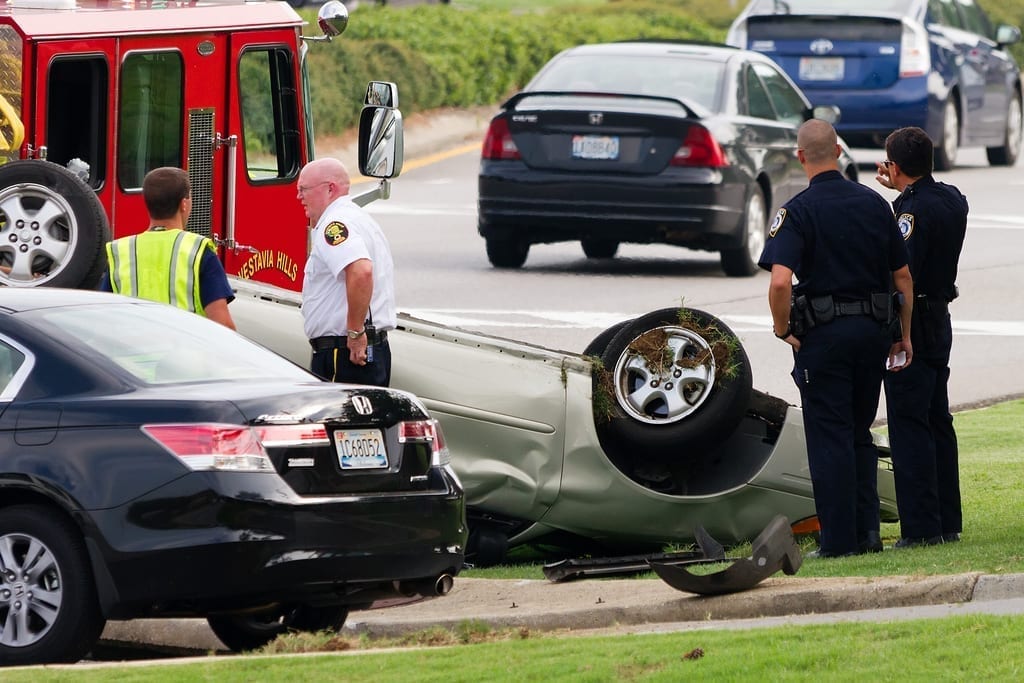Anywhere people drive, there are going to be accidents. However, there’s no reason that many of the most dangerous intersections can’t be made safer for drivers and pedestrians. There are several ways to dial down the number and severity of crashes at accident-prone intersections and roads.
The best defense is a good offense, and the best way to avoid becoming a statistic is to avoid dangerous intersections altogether. News stories are a good way to learn about which roads in your city or county have the most crashes. There are also civic groups, businesses, and individuals whose chosen mission is to keep track of dangerous intersections as a public service. The office of Texas attorney Brian White released a new analysis of collision data from 2012-2015 to determine which intersections were the most dangerous in the state. The full list can be found at the law firm’s website. It’s not always possible to take alternate routes, but even knowing ahead of time that your path to work or play could lead you past trouble spots can inspire the extra ounce of caution that keeps you out of harm’s way.
Central Texas makes list of most dangerous intersections by KXAN
Awareness helps, but physical safety measures are even better. By making infrastructure improvements around known trouble spots, cities and counties can save lives. At one busy thoroughfare in Ann Arbor, Michigan, the city turned a four-way stoplight into a roundabout, or “traffic circle.” This forced drivers to slow down, take turns, and drive mindfully. Perhaps ironically, the roundabout caused even more crashes at what was already one of the most dangerous intersections in the state. However, instead of having severe, possibly fatal crashes, people had more minor fender benders. While nobody likes to have a traffic accident, it’s far preferable to have a small one than a big one.
In an effort to monitor hot spots and collect data, cities like Palm Springs, California, study traffic patterns. Small boxes attached to nearby utility poles provide mechanical surveillance of dangerous intersections. This can help decision makers understand the best places to add signage, traffic signals, or crosswalks. Concerned citizens can also petition their cities to add safety features to intersections that they know are particularly troublesome.
With all the study results, accident reports, and other collectible data out there, it may surprise people to learn that improvements are not always made to dangerous intersections as a matter of course. Municipalities almost always have budget constraints that force them to prioritize expenses and use available funds to make the most needed improvements first. Even then, you’d think cities would make traffic data widely available so the public could make the best possible choices for their safety. Not so!
The Center for Investigative Reporting recently covered the story of a Maryland man’s efforts to have the state install a left turn signal at an accident-prone intersection in his neighborhood. His efforts were stymied by a little-known law that allows states to keep traffic safety reports and other related data secret if there’s any chance that releasing the information would expose the state or its agencies to lawsuits for not making safety improvements at intersections known to be hazardous. Ostensibly, this keeps the public safer by allowing state or city officials to undertake research or have candid discussions about traffic trouble spots. Unfortunately, it also obscures the information citizens need to make good decisions. The fear-based lack of transparency also makes finding errors in the data that much harder.
In Tulsa, Oklahoma, a local law firm decided to put together available data to help educate residents. The infographic shows that one particular intersection, 71st and Mingo, was the location of 94 accidents in 2015 alone. In fact, five of the top twenty-five worst intersections in Tulsa are on 71st! The post at the bottom of the infographic gives readers some helpful hints at how to navigate dangerous intersections.
In the end, traffic accidents will be a part of life as long as vehicles are. While states and cities can do a lot to mitigate the problem of dangerous intersections (if they choose to and can afford it), the final guardian of your safety is you! There may well be legal recourse for injuries and property damage resulting from traffic accidents, but avoiding the accident in the first place is the best possible outcome. Safe travels!


Join the conversation!